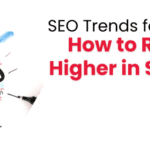
Amazon PPC vs. Google Ads: Key Differences You Need to Know
Choosing the right advertising platform is crucial for businesses looking to maximize their online presence. Amazon PPC and Google Ads, two big players in the world of digital advertising, dominate the space. Each of these offers unique benefits for businesses. However, they significantly differ in terms of how they operate, the audience they target, and the results they deliver. Understanding these differences can guide you in choosing the right platform that aligns best with your business goals.
What is Amazon PPC?
Amazon PPC is an advertising model where sellers pay a small fee every time someone clicks on their ad. This model is specially designed for businesses that sell their products on Amazon. It helps them increase the visibility of their products on the platform. The primary goal of Amazon PPC is to drive more traffic to your product listings, leading to an increase in sales.
There are three main types of Amazon PPC ads:
- Sponsored Products: These ads promote individual product listing on the platform, appearing in search results and on product pages.
- Sponsored Brands: These ads showcase a brand’s logo, customized headlines, and up to three products. The ads appear in prominent positions, like at the top of search results.
- Sponsored Displays: These advertisements help advertisers target relevant audiences on and off Amazon by displaying ads on third-party websites and apps.
Pros:
- High Purchase Intent: Amazon’s users are usually ready to buy, which leads to higher conversion rates.
- Integrated Ecosystem: Ads are integrated within Amazon’s platform, making it easier to generate sales.
Cons:
- Limited Reach: Amazon PPC ads only appear on the Amazon platform, limiting exposure to non-Amazon users.
- Competitive Bidding: Popular categories with high competition may have higher bid value, which can inflate costs.
How Amazon PPC Works?
Amazon PPC operates on an auction-like process. Advertisers bid on keywords relevant to their products, and when a customer searches for these keywords, the ad of the highest bidder is likely to appear on top. However, it’s not just about bidding; the relevance of the product listing and the keyword is equally critical.
For Amazon PPC campaigns to work well, product listings require optimization. This includes incorporating high-quality images, clear and detailed product descriptions, and competitive pricing. The better your listing is optimized, the higher your chances of converting clicks into sales.
What is Google Ads?
Google Ads is one of the most popular advertising platforms. It offers businesses a variety of ways to reach potential customers. It allows advertisers to create ads that will appear on Google’s search result pages, the Google Display Network, YouTube, and other partner sites.
The platform offers different types of ads:
- Search Ads: These are simple text ads. They appear at the top or bottom of Google’s SERP when users search for specific keywords.
- Display Ads: Visual banners that appear on websites within Google’s Display Network.
- Shopping Ads: These are product-based ads that appear in search results with images, pricing, product details, and store information.
- Video Ads: They’re ads that play before, during, or after YouTube videos.
How Google Ads Works?
Google Ads, similar to Amazon PPC, operates on a bidding system. Advertisers place bids on certain keywords, and when a user searches for these keywords, Google runs an auction. This decides which ads will appear and in what order. The bid amount and the ad’s quality score (including factors like relevance and the landing page experience) determine the ad’s position.
The landing page has great importance in the success of Google Ads campaigns. The ad should lead the users to a well-designed landing page that aligns with the user’s search intent, encouraging them to take action, such as buying the product or filling out a contact form.
Pros
- Wide reach: Google Ads have the power to reach users across the internet, giving you a wider audience.
- Flexible Ad Formats: With Google Ads, you can use choose ad formats, making them adaptable to different advertising strategies.
Cons
- Lower Purchase Intent: People using Google Ads might not be as ready to buy as those on Amazon.
- Potentially Higher CPC: The click cost can be higher in competitive industries like insurance. This can affect ROI.
Key Differences Between Amazon PPC and Google Ads
- Audience Intent
Amazon users are usually closer to making a purchase, which leads to higher conversion rate for Amazon PPC ads. Google Ads, on the other side, target a broader audience with varying intents. So, it can reach users at initial stages of purchase but may not convert as effectively.
- Ad Formats and Options
Amazon PPC offers product-based ads within Amazon’s own network, which is perfect for direct selling. Google Ads, on the other hand, provides you with an array of ad forms like text, display, and video ads. This lets you customize your campaigns to fit different platforms.
- Cost and ROI
Amazon PPC often delivers strong ROI due to higher buying intent, but costs may change depending on competition. Google Ads may have higher cost-per-click, especially in competitive industries, but its broader reach could justify the cost.
- Targeting Capabilities
Amazon PPC targets users based on their shopping behaviors on Amazon. This makes Amazon Ads an ideal choice for product-based advertising. Google Ads, on the other hand, offer more advanced targeting options like demographics and interests. This advertising approach is suitable for reaching specific audience segments.
Choosing the Right Platform for Your Business
When deciding between Amazon PPC and Google Ads, consider your business goals, target audience, and budget. Amazon PPC works great for your business focused on selling products within the Amazon ecosystem, especially if your customers are already shopping on Amazon. It’s also beneficial for sellers who want to use Amazon’s buying-ready customers to increase sales.
On the other hand, Google Ad Services are better suited for businesses that want to reach a broader audience and achieve a range of marketing goals. If your business operates in a high-competition industry and needs various ad formats, Google Ads might give you more flexibility and reach.
For many businesses, integrating both platforms can create a comprehensive digital marketing strategy. You can use Amazon PPC for direct sales and Google Ads for brand awareness and lead generation, you can make the most of your online presence and reach potential customers at different buying stages.
Conclusion
Amazon PPC and Google Ads are powerful online advertising tools with each serving a different purpose. It’s essential to understand the key differences between these platforms to make an informed decision on which to use or whether to combine both into your marketing strategy.
Whether you choose Amazon PPC for its high purchase intent or Google Ads for wider audience coverage, choosing the right platform can significantly impact your business’s success.










